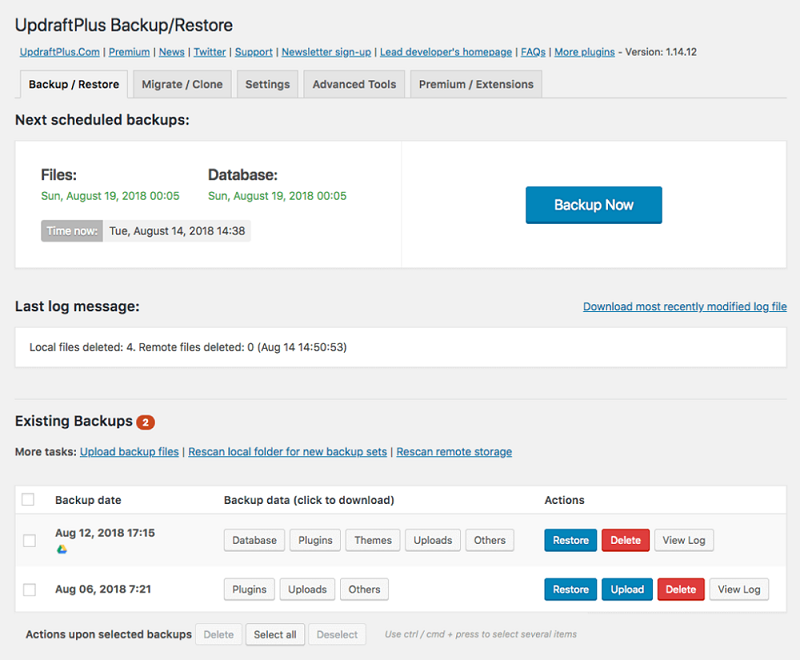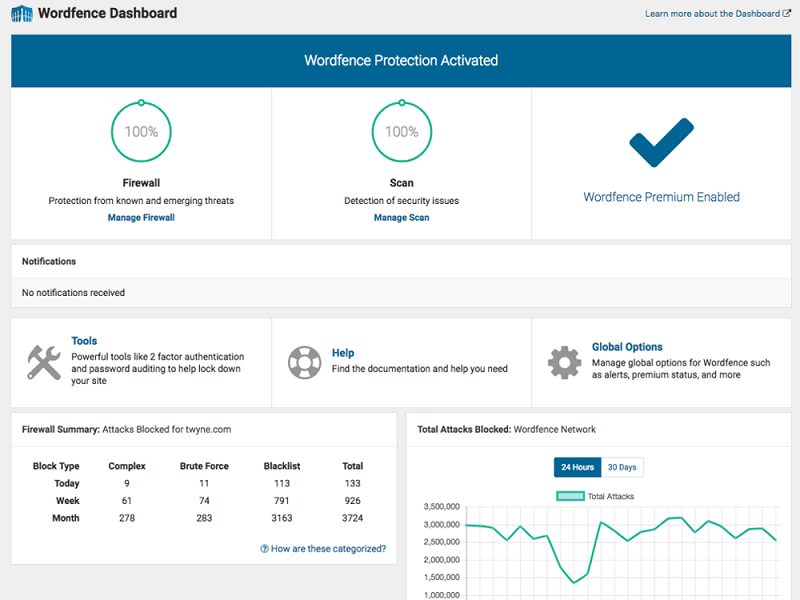Tips and Tricks to Perform WordPress Automation
Running a website is not a walk in the park; it takes a lot of time and effort to run it successfully. If you own a WordPress site or blog, you must know how much time all those little updates and backups take. There are many tasks that need to be taken care of on a regular basis. You cannot miss the regular updates because it might have some serious consequences on your business and audience.
Have you ever wondered how much time you could have saved if all those tasks were taken care of without you putting in that perpetual effort? If you run an e-commerce site or a blog that has to maintain transactions of some sort, it is double the work.
Plugins do it all

Thankfully, WordPress supports automation of all those mundane yet important tasks. This is primarily taken care of by plugins and WordPress has a lot of them. By using plugins, you can automate a large part of your WordPress maintenance that won’t need much of your time and attention anymore.

Limitations of plugins
There are some limitations with plugins. If you make a blog and then realize that it’s loading like a sloth then I would suggest that you go check out your plugins. Plugins put a lot of weight on the site which makes it slower. Plugins with a bad script, outdated ones, and heavy plugins will make the site heavy. As enticing as they are, you must not overdo them. Figure out what the most important and fundamental tasks that your website or blog needs to perform. What is your base expectation for the site? Is it performance, is it to deliver rich content or is it all about business transactions?
Once you are clear what your primary objective is with the site, you can carefully choose the areas that you need to automate and which ones can be handled manually.
How to identify tasks that need automation

Automating your WordPress will save you a lot of time but can also put weight on your site. It is important to identify areas that need automation and areas that should be handled manually. It is so as to get you that perfect concoction to bring about optimum efficiency for your site.
Depending upon the nature of your site, you should create a list of tasks that are primary to running your site and another list of those that are secondary or run in the background. For example, you can see the list below to get a vague idea of tasks you might be tending to for your site.
- Lead generation
- Lead nurturing
- Updates and backups
- Security and anti-spamming
- SEO
- Social media
- Content marketing
- Client projects
- Troubleshooting for clients
- Customer service
- Managing employees or contractors
- Invoicing and accounting
- Bill collecting
- Updating the company website
You must know what and to whom your site is catering to. With this observation, you can understand that there are certain areas that you should not automate. For example, no one likes to talk to a bot to get their problems addressed. Thus addressing troubleshooting for clients with automation would be a bad idea. It is better that there is a human dealing with customer service issues and not bots.
Handling transactions and sending invoices manually can become a tedious and stressful process, especially if you are doing well in business. Adding a secure payment gateway that does the job for you will make more sense than dealing with all the transactions manually. Automating and scheduling your first stages of marketing is also a good idea, you can automate emails, newsletters, and other similar aspects.
Updates
Updating your site is essential if you use a lot of plugins or themes. Failing to update might push you into some compatibility and security issues. Updates can get delayed or you might just forget in the middle of all that you are doing. Being on top of all the updates manually will take away precious time that should be spent on content creation and interaction with visitors.
WordPress already has a built-in system where you can set the preferences and it will take care of your updates. But if you really are looking to get more control over your updates, then there are a few reliable plugins available at your disposal. Companion Auto Update and Easy Update Manager are two great plugins that let you update your plugins, themes and WP core background automatically. You control to what extent you want to automate your updates.
Backups
As with updates, backing up your site on a regular basis is an essential security measure. A full backup stored in a safe, external location means you’re always able to restore your site quickly if it’s hacked, information is accidentally deleted, or it develops a serious bug or other issues. It’s best to perform backups regularly and to keep multiple copies around. This means it can save you valuable time to automate WordPress Maintenance tasks in this area.
Updraft Plus and Jetpack are great tools to automate your backup. This will save you a lot of time. You schedule your backups, set control over what needs to be backed up or enable full site backup, and store copies in multiple locations.
Security
Why is it important to secure your site against external issues? This is the dumbest question to ask. Wordfence security is a go-to plugin that takes care of it pretty well. Wordfence includes an endpoint firewall and malware scanner that was built from the ground up to protect WordPress. The Threat Defense Feed arms Wordfence with the newest firewall rules, malware signatures and malicious IP addresses it needs to keep your website safe.
There are a lot of other security plugins that you can go through and select the one that meets your need. Shield Security is also a good plugin to secure your WP site. Shield Security does what it needs to do, and alerts you if and when you need to be informed. If you need a simple but reliable protection tool, then using Jetpack will be a nice idea. It is an all in one tool, which equips you with features like:
- Brute force attack protection, spam filtering, and downtime monitoring
- Daily or real-time backups of your entire site
- Secure logins with optional two-factor authentication
- Malware scanning, code scanning, and automated threat resolution
- Fast, priority support from WordPress experts
Image optimization
No one likes slow loading sites and one major reason for sites to load too slowly is the presence of heavy media files. By now you realize how important it is for your site to be fast and secure. An average user will exit your site if it takes more than 3 seconds to load.
You must understand the importance of your time and how you can save it by automating WordPress processes. If you manually try to optimize images before uploading them to your site, it will eat a whole lot of your time.
Smush is a great tool to automate optimization for all the media that goes on your site. Smush meticulously scans every image you upload – or have already added to your site – cuts all the unnecessary data and scales it for you before adding it to your media library.
Scheduling Posts
People generally underestimate the importance of scheduling your blog posts beforehand. It saves a lot of time. WordPress’s built-in system supports scheduling posts for upcoming dates. There can also be a lot of benefits to it. If you schedule your posts beforehand, then you can create a consistent stream of content going out to your audience and it creates a certain interaction as they know when to expect a post from you.
Simply click on the Edit button next to “Publish immediately” under Publish Settings.

You’ll then see it change to this:

Set the future date and time when you want it to publish, press OK to save the settings, and then press the Schedule button.
Automation indeed will save you a lot of time. There are a lot of WordPress areas that can be automated but as we discussed, always carefully identify automating which area will yield the most benefit to you. Identify which plugins best suit your needs and don’t weigh down your site.
The WPMRR WordPress podcast, entirely focused on growing successful WordPress businesses and monthly recurring revenue without taking itself too seriously.

Read Also
100 Best WordPress Plugins Used by the 15 Top WordPress Blogs
How to Change the WordPress Login Page Without a Plugin
How To Choose The Best WordPress Plugins For Your Site
How to Create a Sticky Menu on WordPress
Don’t miss out these all-time favourites
- The best hosting for a WordPress website. Tap our link to get the best price on the market with 82% off. If HostPapa didn’t impress you check out other alternatives.
- Monthly SEO service and On-Page SEO - to increase your website organic traffic.
- Website Installation service - to get your template up and running within just 6 hours without hassle. No minute is wasted and the work is going.
- ONE Membership - to download unlimited number of WordPress themes, plugins, ppt and other products within one license. Since bigger is always better.
Get more to your email
Subscribe to our newsletter and access exclusive content and offers available only to MonsterPost subscribers.



Leave a Reply
You must be logged in to post a comment.